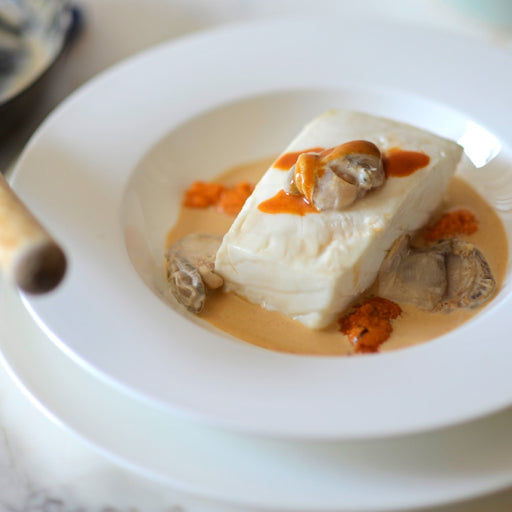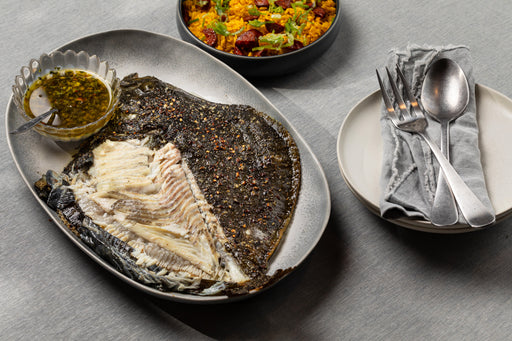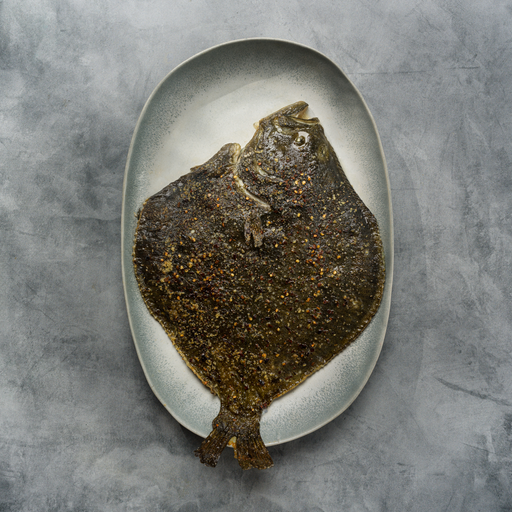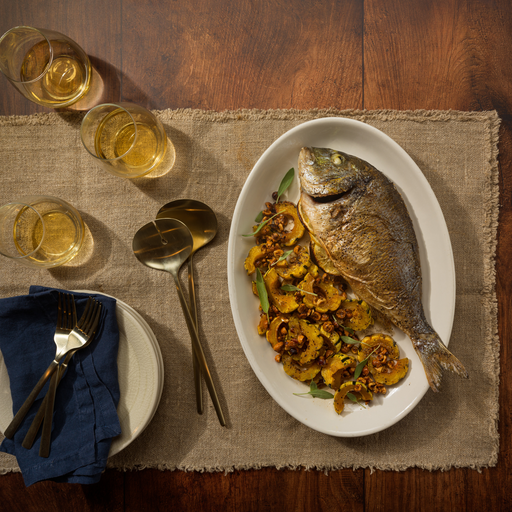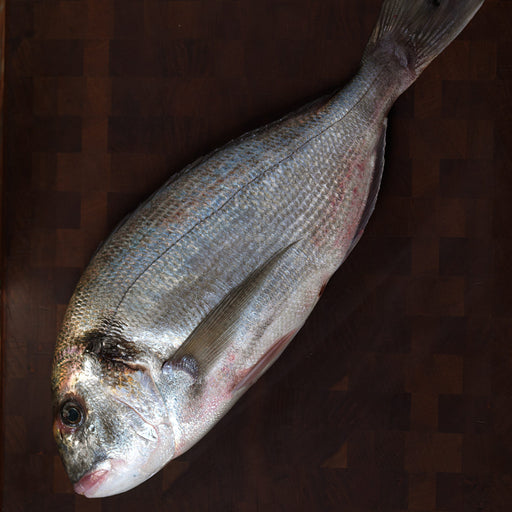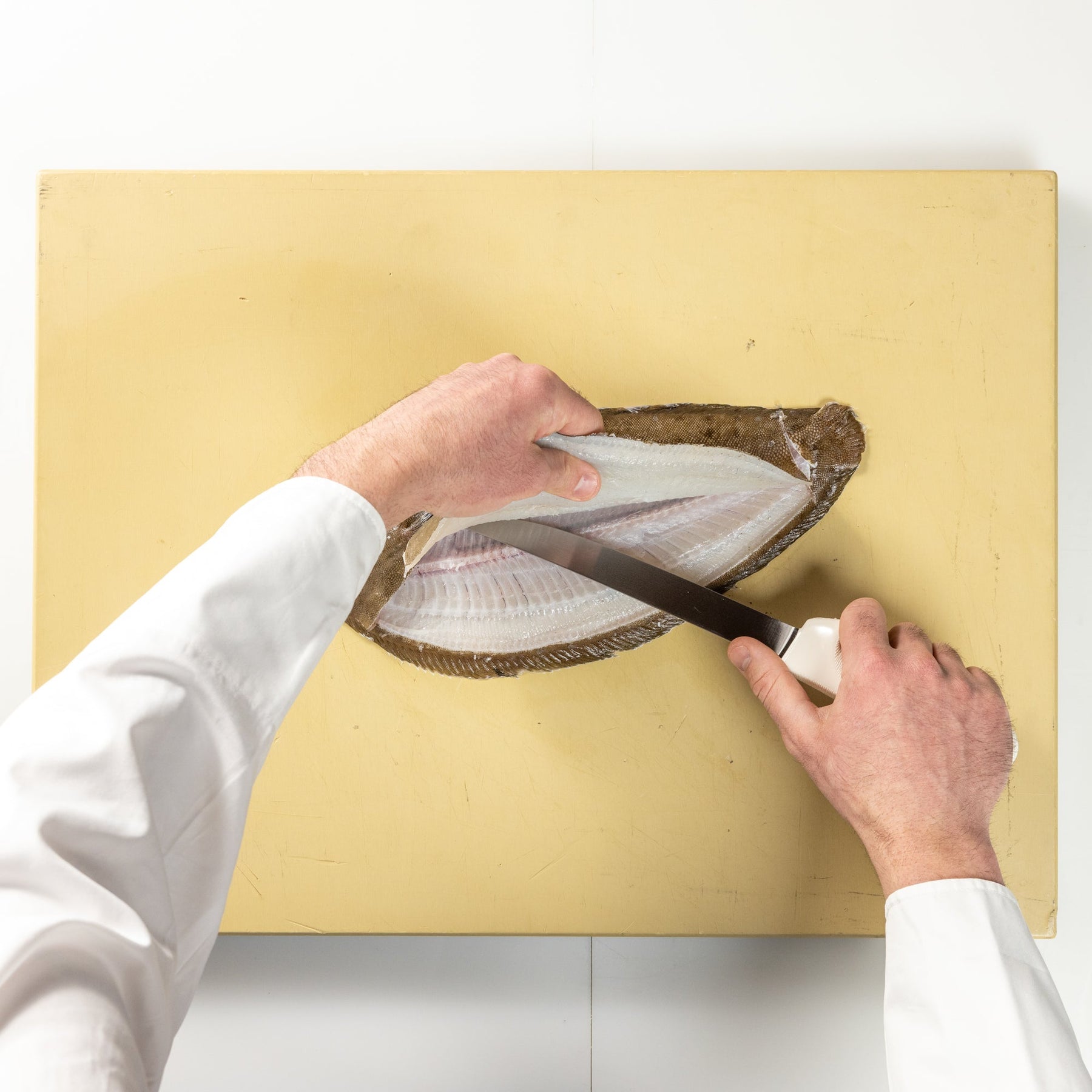
How to Fillet and Skin a Flatfish
Filleting a Flatfish
1. Position the Fish
Place dark side up, with the tail pointing toward you and the head away. This provides better visibility of the spine and control during the cut.
2. Central Incision
Begin by making a precise incision along the central backbone, from the head to the tail, lightly scoring the skin to expose the bone line that guides the filleting.

3. Removing the Upper Fillet (Right side of spine)
-
Insert knife just along one side of the spine.
-
With smooth, short strokes, glide the blade outward toward the edge, keeping it close to the rib bones.
-
Peel away the fillet, revealing the clean skeleton underneath.


4. Removing the Lower Fillet (Left side of spine)
-
Apply the same technique to the other side of the backbone.
-
Maintain the blade flush with the bones, lifting the flesh gently as it's separated.

5. Flipping the Fish
-
Flip the fish and make the same central incision along the spine on the white side.
-
The remaining two fillets are removed in the same order: first one side, then the other.
Skinning a Flatfish
1. Position the Fillet
-
Lay the fillet skin-side down on the board, tail end closest to you.
-
Ensure the fillet lies flat and steady on the board, likely using the palm or fingertips to lightly anchor the thicker end.

2. Start the Cut at the Tail End
-
Using a small, shallow incision at the very tail end, slice just between the skin and flesh, creating a small flap of skin to grip.
3. Establish a Grip
-
The tail end of the skin is held firmly with fingers or a cloth to prevent slipping.
-
Maintain tension on the skin to help separate it cleanly from the flesh.
4. Angle the Knife
-
The blade is held almost horizontal, just above the cutting board, with a slight downward angle toward the skin.
-
In a fluid, sawing motion, work the knife between the skin and the flesh, pulling the skin taut while sliding the blade forward.

5. Smooth Removal
-
The knife stays as close to the skin as possible, minimizing flesh waste.
-
In one confident motion, the skin is separated cleanly from the entire length of the fillet.
6. Inspect the Fillet
-
The resulting fillet is smooth, intact, and free of skin.
-
Any excess silver skin or leftover bits may be trimmed for presentation.
Featured collection
North Atlantic Halibut
2 pound, skin-on fillet, fresh2 portions, skin-off, 1 pound total, frozen Sustainably caught according to local regulations and quotas Landed whol...
View full detailsFarmed Dover Sole
2 whole fish, 2 pounds total, skin-on & gutted4 skin-on fillets, 1 pound total, fresh or frozen Iconic for French cuisine Expertly raised by S...
View full detailsEuropean Turbot
2 whole fish, 1.5-2 pounds each, skin-on and gutted4 fillets, 2 pounds total Expertly raised by Prodemar aquaculture in Spain Specially purged and...
View full detailsWild Dover Sole
2 whole fish, 2 pounds total, skin-on and gutted4 skin-on fillets, about 1 pound total Coveted, wild flat fish from Portuguese fish auctions Caugh...
View full detailsDaurade Sea Bream
2 whole fish, 3-4 pounds, scaled and gutted4 fillets, 1.5-2 pounds Sustainably raised at Esteros Lubimar with an all-natural, native diet Exclusi...
View full details

